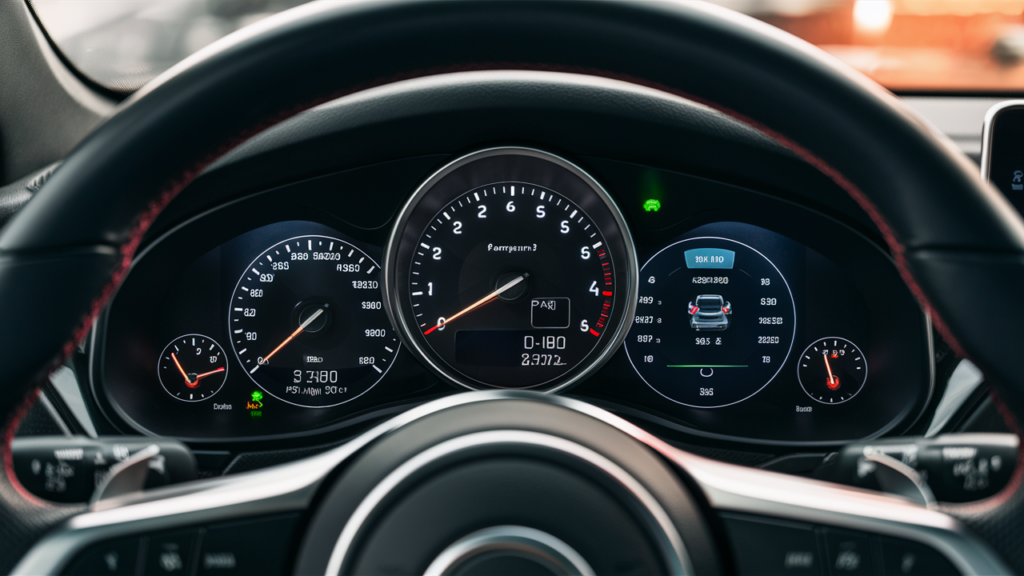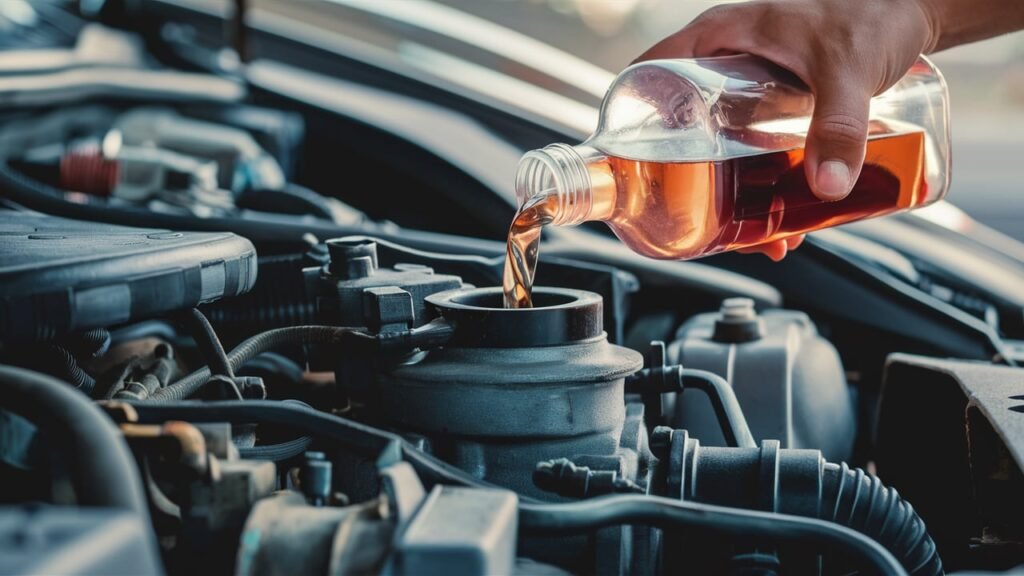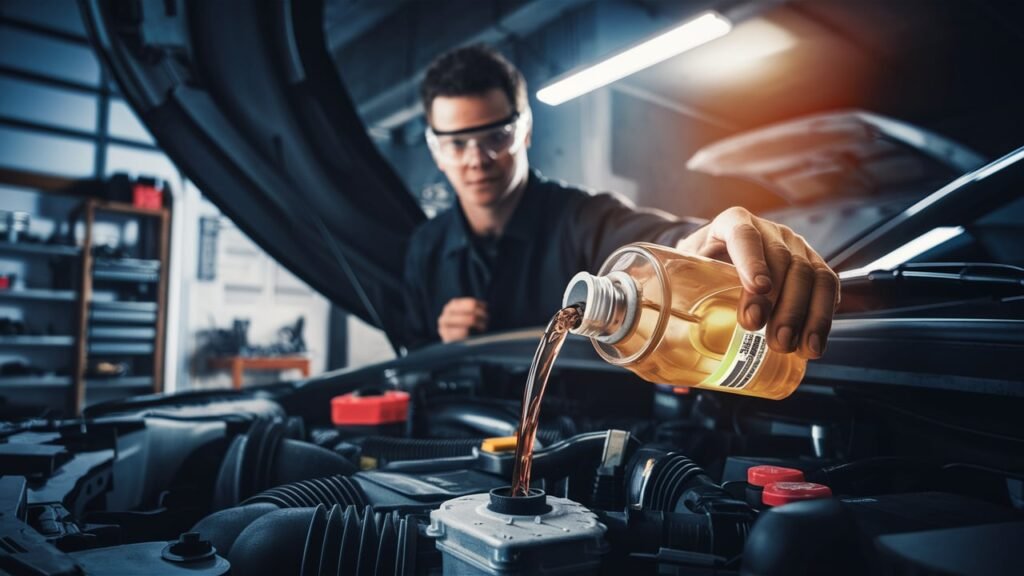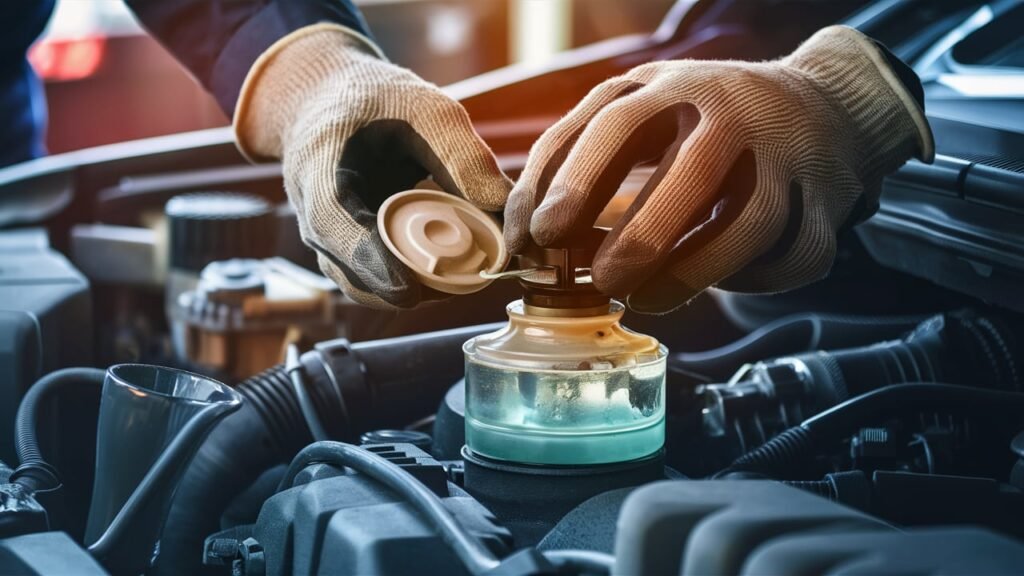
Unveiling the Secrets Behind Automotive Performance
Automotive performance refers to the capabilities of a vehicle in terms of speed, acceleration, handling, and overall driving experience. It encompasses various aspects such as:
- Acceleration: The ability of a vehicle to quickly gain speed from a standstill or when accelerating from a given speed.
- Top Speed: The maximum speed a vehicle can reach.
- Handling: The vehicle’s ability to steer, turn, and corner smoothly and effectively.
- Braking Performance: The vehicle’s ability to slow down quickly and maintain stability during braking.
- Fuel Economy: The efficiency with which a vehicle consumes fuel, which is often a key consideration for drivers.
- Emissions Reduction: The ability of a vehicle to minimize its environmental impact by reducing emissions.
- Safety Features: The presence and effectiveness of safety features such as airbags, anti-lock braking systems (ABS), and electronic stability control (ESC).
- Suspension and Aerodynamics: The design and performance of the suspension system and aerodynamics, which affect the vehicle’s handling and stability.
- Engine Performance: The power and efficiency of the engine, including factors like horsepower, torque, and fuel injection.
- Overall Driving Experience: The overall feel and satisfaction of driving the vehicle, including factors like comfort, noise levels, and vibration.
Automotive performance is influenced by various factors, including the vehicle’s design, engine, transmission, suspension, and aerodynamics. Manufacturers often strive to balance these factors to create vehicles that excel in multiple areas, providing a desirable driving experience for their customers.
Unveiling the Secrets Behind Automotive Performance opens a realm of untold intricacies that dictate the prowess of vehicles on the road. Defined by its fusion of ability, power, efficiency, and overall capabilities, automotive performance is the cornerstone of every enthusiast’s journey towards unlocking the full potential of their beloved machines. It transcends mere acceleration and speed; it encompasses a symphony of factors culminating in an orchestra of handling precision and driving exhilaration.

In this immersive exploration, readers are invited to delve deep into the core essence of automotive performance—a domain where knowledge reigns supreme. Understanding these intricate performance factors serves as a lodestar guiding enthusiasts through the labyrinthine world of modifications, maintenance routines, and nuanced driving behaviors.
Navigating this landscape armed with insights paves the way for informed decisions that can elevate not only a vehicle’s output but also its soulful connection with its driver. Buckle up for an enlightening voyage into the heartbeat of automotive excellence, where every turn reveals a new facet waiting to be mastered.
The role of engine tuning.
The role of engine tuning is pivotal in unlocking a vehicle’s true potential. Engine tuning encompasses a diverse range of processes that can significantly impact a car’s power delivery, fuel efficiency, and overall performance. By recalibrating various engine parameters, enthusiasts and mechanics alike can tailor the behavior of an engine to suit specific preferences or performance goals. Whether it’s adjusting air-fuel ratios, ignition timing, or boost levels in forced-induction applications, each modification plays a vital role in shaping the engine’s characteristics.
When delving into engine tuning, one encounters an array of techniques aimed at maximizing output and drivability. ECU remapping stands out as a popular method that involves reprogramming the engine control unit to optimize performance without needing physical alterations.
Turbocharging and supercharging are powerful methods to increase horsepower by forcing more air into the combustion chamber, enabling engines to produce more power than their naturally aspirated counterparts. Moreover, exhaust modifications such as installing high-flow systems can enhance airflow efficiency and amplify the engine’s sound profile while improving performance metrics.
The benefits derived from meticulous engine tuning efforts are profound. Optimizing engine performance often translates to tangible gains in horsepower and torque output—essential metrics for any performance-oriented vehicle enthusiast.
Beyond sheer power enhancements, finely-tuned engines offer enhanced throttle response, smoother power delivery across the rev range, and heightened driving experiences that can elevate mundane commutes into exhilarating journeys on twisty back roads or racetracks.
In essence, understanding the intricacies of engine tuning provides enthusiasts with a gateway to tailor their vehicles’ behavior to match their desired driving experience. By exploring various tuning methodologies and their impacts on power output and drivability, individuals can fine-tune their cars to meet specific performance objectives while reveling in the dynamic improvements brought about by optimized engine tuning practices.
Suspension Systems and Handling.
Suspension systems are a cornerstone of an automobile’s performance capabilities, playing a crucial role in determining the vehicle’s stability, cornering abilities, and overall comfort during aggressive driving maneuvers.
High-quality suspensions ensure that the tires maintain optimal contact with the road surface, allowing for precise steering input and enhanced control even in challenging conditions. Imagine taking a sharp corner at high speed – a well-designed suspension system keeps your car planted to the ground, minimizing body roll and maintaining stability throughout the turn.
The fundamental components of a suspension system – shocks, struts, and springs – work together to absorb bumps and vibrations from the road, providing a smooth ride while also enhancing the vehicle’s handling characteristics.
Shocks dampen sudden movements, while struts offer structural support, and springs regulate weight distribution across the chassis. Together, these elements create a balanced system that contributes to improved maneuverability and driver confidence during spirited driving.

For those looking to elevate their vehicle’s performance capabilities further, upgrading the suspension system can yield significant benefits. Upgrades like coilovers allow for adjustability in ride height and damping settings, enabling drivers to fine-tune their setup for specific driving conditions or preferences.
Sway bar upgrades add stiffness to the chassis, reducing body roll during cornering maneuvers and enhancing overall agility and responsiveness on both straightaways and twisty roads. These enhancements not only improve performance but also deliver a more engaging driving experience tailored to individual preferences behind the wheel.
Significance of aerodynamics.
Significance of aerodynamics in the realm of automotive performance cannot be overstated. Aerodynamics doesn’t just pertain to a car’s sleek aesthetics; it directly impacts speed, stability at high velocities, and even fuel efficiency.
When a vehicle slices through the air with minimal resistance, it can achieve higher speeds while maintaining control and using less energy, ultimately leading to better overall performance. Understanding these principles allows enthusiasts to appreciate how car designs are finely tuned for optimal airflow management.
Aerodynamic components such as spoilers, diffusers, and body kits play crucial roles in enhancing a vehicle’s aerodynamic efficiency by reducing drag and increasing downforce. For example, a rear spoiler can help reduce drag by minimizing turbulence behind the vehicle, allowing for smoother airflow which can lead to improved handling at higher speeds.
On the other hand, diffusers positioned under the car can create negative pressure or suction underneath, aiding in generating downforce that presses the car onto the road for enhanced stability during cornering or braking maneuvers.
Manufacturers invest heavily in wind tunnel testing methods to fine-tune their vehicles’ aerodynamic profiles. Through these sophisticated tests, where cars are subjected to controlled wind speeds and pressures emulating real-world conditions, engineers meticulously refine exterior shapes and features to maximize aerodynamic performance.
For instance, supercar manufacturers like Ferrari or McLaren often employ advanced Computational Fluid Dynamics (CFD) simulations alongside physical wind tunnel experiments to perfect their hypercars’ aerodynamics – aiming for optimal balance between drag reduction and downforce generation for peak on-track performance.
This dedication to examining airflow intricacies underscores how critical aerodynamics is in unlocking top-tier automotive performance capabilities.
Braking Systems for Enhanced Performance.
When it comes to automotive performance, the braking system plays a crucial role that should never be underestimated. High-quality brakes are not only essential for safety but also fundamental in high-paced scenarios like acceleration events or racing situations. Enthusiasts looking to push their vehicles to the limit must invest in brakes capable of handling the demands of high-performance driving.
Delving into the components that make up a braking system, one significant consideration is the type of brake pads used. Different materials like ceramic and semi-metallics have varying impacts on stopping power, heat dissipation, and overall longevity.
For instance, ceramic brake pads excel in providing smooth, quiet stops with less dust generation compared to semi-metallic options. On the other hand, semi-metallic brake pads offer robust stopping power suited for aggressive driving but are generally noisier than their ceramic counterparts.

To elevate a vehicle’s braking capabilities further, enthusiasts often explore upgrading brake components such as calipers and rotors. Upgraded brake calipers provide enhanced clamping force and heat dissipation abilities, while larger rotors offer increased surface area for improved heat management and better bite during intense braking maneuvers. These upgrades not only contribute to shorter stopping distances but also ensure consistent performance under strenuous conditions.
In conclusion, understanding the intricacies of braking systems and their related components is paramount for anyone seeking to enhance their vehicle’s performance capabilities. By selecting appropriate brake pad materials and considering upgrades like calipers and rotors, enthusiasts can fine-tune their braking systems to deliver optimal safety and performance outcomes during spirited drives or competitive events.
The synergy between well-designed aerodynamics discussed earlier and top-notch braking systems creates a harmonious balance for achieving peak automotive performance levels safely and effectively across diverse driving scenarios.
Tire selection.
Tire selection plays a crucial role in dictating the performance capabilities of a vehicle. The type of tire compound used directly impacts the grip levels experienced during various driving conditions. From rapid accelerations to sharp turns and challenging weather situations, different tire compounds can significantly affect how a vehicle handles on the road.
For instance, high-performance summer tires are engineered to provide optimal traction on dry surfaces, enhancing agility and responsiveness during spirited driving sessions. In contrast, all-season tires are designed to offer adequate grip under a variety of conditions, including wet roads and light snow, ensuring versatility throughout the year.
Choosing the right type of tire based on individual driving needs is paramount when aiming for optimal performance outcomes. Enthusiasts looking to push their vehicles to the limit may opt for specialized tires that cater specifically to their preferred driving style and road conditions.
By understanding these distinctions, drivers can tailor their tire choices to align with their performance expectations effectively. Additionally, maintaining proper tire pressure and regular maintenance routines are key factors in preserving tire longevity while maximizing grip levels on the road. Educating users about these essential practices ensures that they extract the best possible performance from their tires.
In essence, tires act as the sole point of contact between a vehicle and the road surface, making them fundamental contributors to automotive performance. Whether navigating tight corners or accelerating down straightaways, the grip provided by well-matched tires can make all the difference in handling and stability.
By delving into the intricacies of tire technology impact, enthusiasts can gain valuable insights into how this often-overlooked component influences overall driving experiences. When drivers grasp the significance of selecting appropriate tires and maintaining them correctly, they set themselves up for heightened performance potential on every journey they undertake.
Factors Influencing Vehicle Weight Distribution.
Vehicle weight distribution plays a pivotal role in the dynamics and performance of an automobile. When focusing on how weight is distributed between the front and rear of a vehicle, it substantially impacts key aspects like braking distances, stability during aggressive maneuvers, acceleration, and cornering capabilities.
A well-balanced weight distribution ensures that braking forces are evenly applied to all tires, maximizing stopping power and enhancing overall stability especially when navigating challenging driving scenarios.
The strategic use of lightweight materials in automotive design significantly contributes to achieving optimal weight distribution. Materials such as carbon fiber panels or aluminum frames assist in reducing the overall weight of the vehicle while maintaining structural integrity. By implementing these lightweight components, manufacturers can create vehicles with lower center-of-gravity, resulting in improved handling characteristics and better traction control under varying driving conditions.

Furthermore, lowering heavy components within a vehicle enhances its stability margins by reducing the center-of-gravity height. This design approach influences how cornering forces are distributed throughout the vehicle more effectively, aligning them with available traction limits.
Optimizing weight distribution through proper placement of heavy elements not only enhances safety but also improves the overall responsiveness and agility of the vehicle during dynamic driving situations, ultimately elevating the driving experience for enthusiasts seeking high-performance capabilities on the road.
Future of Automotive Performance Enhancement and Conclusion.
As technology advances rapidly, the automotive industry is embracing significant shifts towards enhancing performance through innovations like electric vehicles (EVs). The strides made in EV technology are reshaping the landscape of automotive performance.
Electric motors, known for their instant torque delivery, offer unparalleled acceleration compared to traditional gasoline engines. Models such as Tesla’s Plaid, the GMC Hummer EV, and the Rimac C_Two exemplify this trend by showcasing the capabilities of cutting-edge battery solutions that redefine what pure-performance means in today’s automotive scene.
In conclusion, by delving into the intricacies of automotive performance secrets ranging from engine tuning techniques to aerodynamics to weight distribution principles, enthusiasts can equip themselves with knowledge that unlocks new possibilities in enhancing their driving experiences.
Understanding these foundational aspects empowers car enthusiasts to tailor their vehicles for optimal performance in tackling any extreme road challenges they may encounter. As technology continues to evolve, staying informed about automotive performance dynamics will be key to maximizing both the enjoyment and capabilities of one’s vehicle on every journey.




